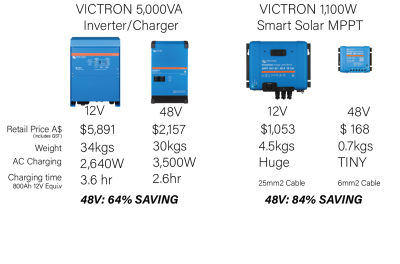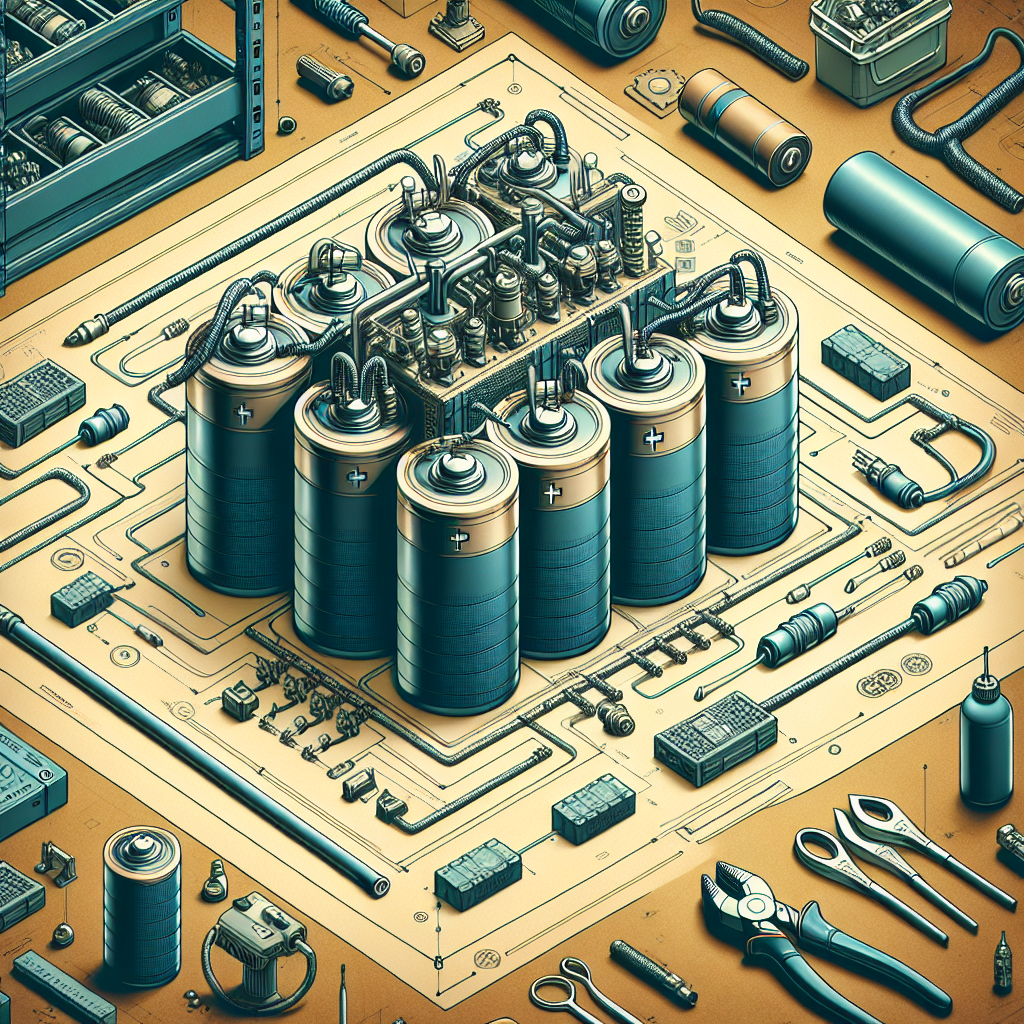Lithium Battery Table of Contents
- Building Your Lithium Battery System: A Comprehensive Guide
- Batteries need to be Replenished
- Choosing the Right Batteries
- Designing Your Battery System
- Battery Management Systems make Your life Easy
- Conclusion
Building Your Battery System: A Comprehensive Guide
Whether you’re a DIY enthusiast, a professional electrician, or someone interested in renewable energy, selecting the right battery system is an important investment. You don’t want to spend money twice. This article will guide you through the process, providing valuable insights and practical tips to help you create a reliable and efficient battery system.
Understanding Battery Systems
A battery system, also known as an energy storage system, is a set of batteries connected together to store electrical energy.
Lead/Acid or AGM batteries are excellent starting batteries for a vehicle. As a rule, it is a poor choice to use Lithium for vehicle starting as the vehicle has been designed around AGM voltages and Lithium will upset the settings. Lithium start batteries raise the voltages and the alternator may not give the same level of energy for connected DC DC’s. Starter batteries use little energy when starting and usually are replenished by the alternator in under 15 seconds.
Lithium “ION” batteries covers the entire family of all lithium types including the popular Lithium Iron Phosphate. This family is called “ION” as the electrons move inside the battery without a change in chemistry which happens with AGM and Lead Acid Batteries. Because ONLY the ions move, the batteries are extremely efficient. Generally 95-97% for high quality. This means if 100 units of energy go into a Lithium battery from solar, you can extract 95-97 units out. In AGM batteries, 100 units in gives only 75 units out. 25 units are used converting the chemistry. So just changing to Lithium will increase solar energy available to re-use by 25%. For Energy storage, Lithium or Sodium have a longer lifespan and higher energy density than lead-acid batteries. However, they are more expensive.
Batteries need to be Replenished
The first step in building your battery system is choosing how the energy used will be replenished. If 240V AC Power will be connected all the time, then the battery choice can be simple and building a system is very easy. However, if there will be limted 240V AC, then solar and vehicle DC DC charging will be the replenishment sources of energy. Ideally, the design of the battery system should be based on the energy used in a day is replenished so the battery capacity returns to a similar level at the end of the day. Otherwise, sooner or later, you will run out of battery capacity. The amount of energy used per day is a great place to start. If the replenishment matches the usage, then the batteries are useful between replenishment periods.
Good quality Lithium Batteries are expensive. Minimising the size both saves money and space. Generally adding 2kW of Solar is a similar expense to 2kWh of Lithium and the solar will produce energy day in and day out. It’s a better investment in big solar and big DC DC than a big battery bank. It is easier to keep your understanding of battery size in kWh rather than Amp-hours. This is because, loads are expressed in watts or kW(1,000 wats) as is replenishment energy. So it becomes simple calculations of energy in – less energy out – to calculate what’s left in the battery.
Some rough rules of thumb on energy used
- Fridges: 3 Way fridges use a huge amount of energy a day (4,200Wh) because they are 19% efficient. It is nearly criminal for van manufacturers to continue to supply them. Compressor fridges use around 1,000Wh a day for 60L to 130L and up to 2,000 Wh a day for larger 200L units with a freezer. Having 2 fridges in a canopy with limited ventilation requires 4,800Wh (400Ah at 12V) with small 40A DC DC and small 180W solar. As the canopy gets hot, the cycling time of the fridges changes form 60% on to 100% on. A good quality 240V fridge can be 5-6 Star and use only 500-600w a day. Most 12V caravan fridges are 2.5 Star. A 240V fridge will cost half to one third the price.
- Hot Water: Electric Storage systems are good ONLY if they can be automatically turned off during periods of non-use. Otherwise they continually consume energy to “stay hot”. Most caravan electric hot water systems have limited insulation. Instant Hot Water systems ONLY use energy when being used. Overall these are the most efficient but require 5000W Inverters.
- Ai Conditioning: A good quality air-conditioner will use around 800-1000W per hour in moderate weather. This can double in extremely hot weather. Using the air-con overnight for say 8 hours with a setting of 24C will use around 6400-8000Wh. (about 600Ah at 12V). Then there is the fridge and other chargers running overnight so around 10,000Wh is a minimum size if there is the replenishment energy from solar of vehicle DC DC the next day.
Designing Your Battery System Voltage
The rule of thumb on voltage is: If the current is over 100A, then you are on the wrong voltage. Why? Heat is produced as a form of energy when current is running through a resistance. This is how a toaster works for example. The problem is the formula is current squared. A 12V battery has 4 times the current of a 48V battery from the same load so generates 16 times for heat and losses. If running a 2000W inverter, the current at the battery will be around 200A. The cables have to be 16 times the size at 12V compared to 48V. So rule of thumb is if you will use 2000W or larger 240V loads for more than a few minutes, change to 48V to save cost, weight and have longer battery life.

- Inverter Size can go to 6000W: The Victron 6000VA Inverter charger weighs only 12kgs and is super efficient. You need at least 3000VA to start an air-conditioner from batteries. This is because motors have 3-4 times the start up current compared to running current.
- Solar Systems for 48V: The solar panels for 48V needs to have a panel voltage higher than 65V. The legal limit is 120V so there is plenty of range within this limit. The Sunpower glass panels we recommend are either 76V or 82V each panel and are used in parallel. There is a huge benefit of the higher voltage: we generally find a 20-30% more energy produced from same solar watt panel size with 70-120V of panel voltage than from 12V systems. The enery production starts earlier in the day and responds faster to cloud changes.
A rule of thumb is 20% of the days in an “around Australia” trip will be very poor weather with 10-15% of max solar output. 60%of the days are average wit 50-60% output and 20% are excellent with 100% output. We design solar for the average and excellent days. - DC DC Systems: 48V charging systems from 12V or 24V alternators have a higher capacity and are smaller in size than 12V to 12V units. Safiery’s Scotty AI is available in 125A or 250A (at 12V) models and weigh around 1-2 kgs. They are typically the same size as 40A 12V DC Dc models. The new Mastervolt 12-48V DC Dc is 850W and about the same size as Safiery’s 3000W model. A high power DC DC is essential as a solar backup.
- Installation Location: The new regulations AS/NZ 3002 came into force in November 2023. The location of Lithium batteries MUST be in an externally accessible locker or tunnel boot. They cannot be under a bed sealed off except for a small vent to the outside.
Sodium Ion batteries can be installed inside under the seats or bed. Because they dont catch fire with thermalrunaway, they ae permitted.
Battery Management Systems Make Your Life Easy
The Lithium battery system is the centre of the whole energy system. Accordingly, it is a huge benefit to have batteries with a Battery Management System that communicate with all the charging sources. The Lithium battery will change the maximum charge rate based on the State of Charge and battery temperature. If the communication chosen is CAN (common robust systems used in vehicles, marine and aircraft) then Victron’s energy system will ensure that the broadcast charging values of voltage and current are met. Safiery’s Scotty AI also follows these limits. The result is a long and safe battery life without the dangers that non-CAN BMS batteries may have.
Victron Energy’s cloud based monitoring system enables users with Internet to see the battery State of health and alarm conditions from anywhere there is internet. This is especially valuable when the batteries go flat. Typically this happens at least once to everyone.
Safiery’s new Meteor Battery range has a plug-n-play system of connecting the CAN data cables and batteries together with a simle one button pres to start of stop the battery system. It makes for recovery from aflat battery very simple to do.
Once your battery system is up and running, regular maintenance is crucial to ensure its longevity and efficiency. This includes checking the battery voltage, cleaning the terminals, and replacing any damaged batteries.
Victron have Developed New Diagnostic Reporting Software on the Remote Console for Compliant Lithium
As a battery professional, this is one of the biggest steps forward we have seen. It is still in beta release at the time of writing this post. The new Meteor Battery is compliant and the Video below shows the remote diagnostic running on a Catamaran with 6 batteries 3,400kms away in Coral Bay WA.
Also note the calculated battery capacity. It is 280Ah at a float voltage of 54V for 6 batteries giving 2,520Wh per battery – well above the published 2355Wh and Dyness 2400Wh. Victron are reporting this to have transparency with customers on CAN-BMS lithium. The stated goal of this new diagnostic is to give customers more data if they buy compliant lithium.
This short 1 1/2min video is a must see





